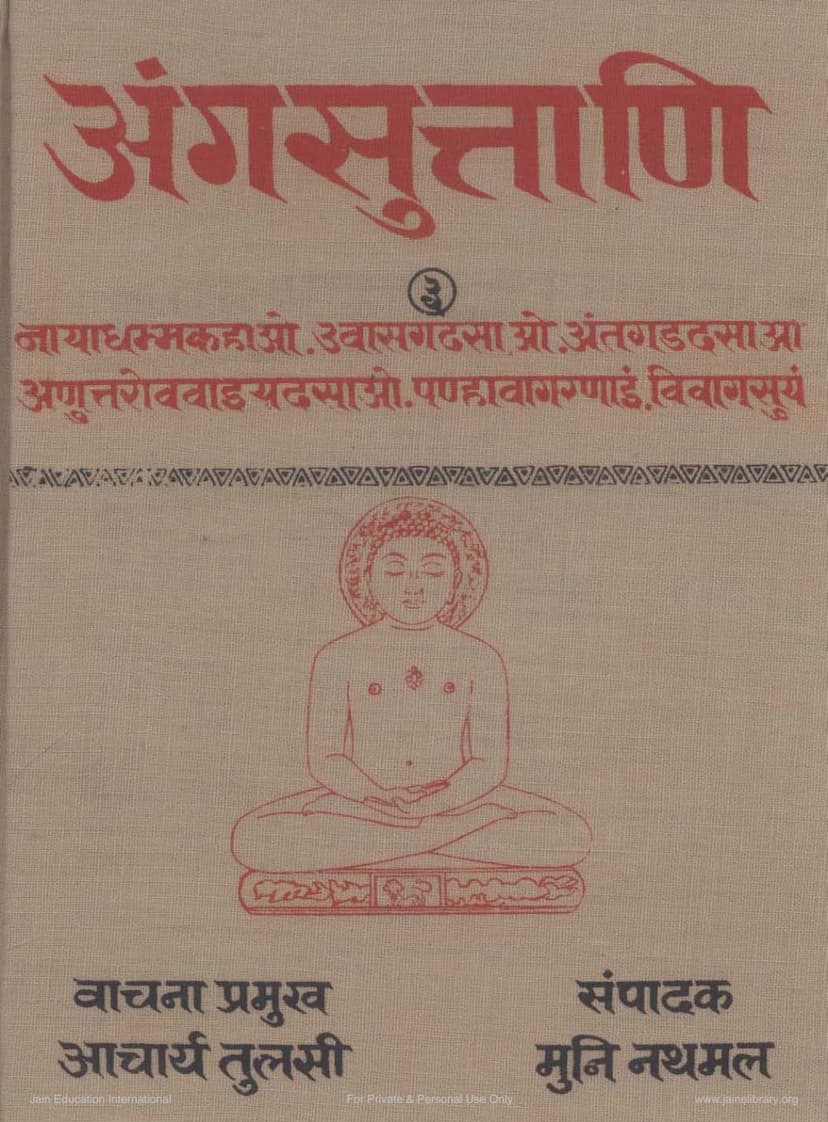Agam 07 Ang 07 Upashak Dashang Sutra Uvasagdasao Terapanth
Added to library: September 1, 2025

Summary
This document provides a comprehensive summary and critical analysis of the Jain text "Upasak Dashang Sutra," specifically the seventh Anga of the Agamas, referred to as "Uvasagdasao." The text, critically edited by Acharya Tulsi and compiled by Muni Nathmal, was published by Jain Vishva Bharati.
The summary delves into the following aspects:
1. Title and Significance:
- The "Upasak Dashang Sutra" is the seventh Anga of the Dwadasangi (twelve Angas) of Jain scriptures.
- Its title, "Upāsagadasão," signifies "The Biographies of Ten Lay Devotees" or "The Ten Chapters on Lay Devotees."
- It holds immense importance in Jain tradition as it primarily outlines the code of conduct for lay followers (Upāsakas), complementing the monastic code.
2. Content and Themes:
- The sutra details the lives of ten prominent lay disciples of Lord Mahavira.
- A central theme is the exposition of the "Twelve Vows" (Dwaadash Vratas) prescribed for lay followers, which are presented as a timeless ethical and religious guide.
- The text also touches upon discussions regarding fatalism (Niyatiwada) and the individual's role in shaping their destiny.
- It highlights the spiritual progress and adherence to vows by the lay disciples, offering practical examples of how to live a righteous life while being engaged in worldly affairs.
- The sutra emphasizes the meticulous attention Lord Mahavira paid to the spiritual development of his lay followers, providing timely guidance and encouragement.
3. Key Figures and Narratives:
- The initial chapters focus on the layman Anand, detailing his initiation and adherence to the vows.
- Subsequent chapters depict the lives of other lay devotees, showcasing their commitment to Jain principles amidst various challenges and temptations.
- The text illustrates the effectiveness of the prescribed vows in leading a spiritual life and achieving liberation, even for householders.
4. Editorial and Publishing Details:
- The publication of this text is part of a larger project by Jain Vishva Bharati to critically edit and publish the Jain Agamas.
- The text is presented in its original Prakrit language with critical notes and references to various manuscripts and commentaries.
- The publication process involved contributions from various scholars, monks, and financial supporters, underscoring the collaborative effort behind preserving and disseminating these sacred texts.
- The preface by Acharya Tulsi highlights the significance of this endeavor, especially during the 2500th Nirvana Centenary of Lord Mahavira.
5. Textual and Scholarly Context:
- The document references various Jain traditions and commentaries, such as Jayadhawala, Tatwartha Vartika, and the works of Acharya Malayagiri and Abhayadeva Suri, to provide context and support for the interpretation of the sutra.
- It also discusses the critical methodology employed in editing the text, emphasizing the comparison of multiple manuscripts to determine the most accurate and authentic version.
- The document provides detailed information about the manuscripts used in the critical edition, including their origin, approximate age, and characteristics, which is crucial for textual analysis.
In essence, the "Upasak Dashang Sutra" serves as a foundational text for understanding the principles of lay Jainism, offering profound insights into ethical conduct, spiritual discipline, and the path to liberation as exemplified by the lives of devoted lay followers. The critical edition by Jain Vishva Bharati aims to make this valuable scripture accessible to a wider audience for study and practice.